This FANTASY Page is for ENTERTAINMENT PURPOSES ONLY !
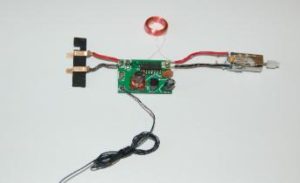 This picture is the guts scooped out of an old flyer. Some modifications are needed to adapt the radio receiver for this experimental project.
This picture is the guts scooped out of an old flyer. Some modifications are needed to adapt the radio receiver for this experimental project.
This tiny R/C plane hit the market in late 2007. Called the MICRO FLYER and made entirely from foam, it can withstand normal crashes. The electronics from the plane and the frequency matched transmitter have been re-commissioned for the ARDs remote missile launching system. The WiFi and remote frequencies will not interfere with each other when used together.
 After removing the battery contacts, a new 3.5vdc battery and the on-off switch was added. Then the motor was removed from the power leads, and a NiChrome wire was soldered across those wires. Seen here are firecrackers with that NiChrome wire looped around each fuse.
After removing the battery contacts, a new 3.5vdc battery and the on-off switch was added. Then the motor was removed from the power leads, and a NiChrome wire was soldered across those wires. Seen here are firecrackers with that NiChrome wire looped around each fuse.
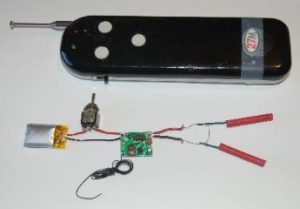 The original transmitter is used to signal the receiver to apply power to the NiChrome wire thus igniting the fuses. For this project, the NiChrome wire will be used to ignite missile fuses packaged in a seven missile pod attached to the top of the ARD.
The original transmitter is used to signal the receiver to apply power to the NiChrome wire thus igniting the fuses. For this project, the NiChrome wire will be used to ignite missile fuses packaged in a seven missile pod attached to the top of the ARD.
NiChrome wire can be found in all sorts of electric appliances, electronic components and can be purchased at hobby shops and electronics supply houses. This wire can be used for cutting foam of all types. A simple hot wire saw was made for cutting the foam in the camera mod page. If you really can’t afford to purchase this wire, a form can be retrieved from an old wire wound power resistor or even an electric toaster. The glowing elements of the toaster are NiChrome wire, snip off a piece and experiment different lengths and different DC voltages. WATCH OUT. A piece of wire with a voltage applied may not glow but WILL BURN YOU! Use caution when messing around with it.
 The things that look like firecrackers are hand rolled and painted rocket engines. Seven of these missiles are loaded into the rear of the launch pad, and all fuses are daisy-chained around the inner fuseway. Daisy chained, so each missile is consecutively fired one at a time minimizing drone instability.
The things that look like firecrackers are hand rolled and painted rocket engines. Seven of these missiles are loaded into the rear of the launch pad, and all fuses are daisy-chained around the inner fuseway. Daisy chained, so each missile is consecutively fired one at a time minimizing drone instability.
The NiChrome wire loop, pulled through a small hole from inside, is wound around a single protruding fuse.

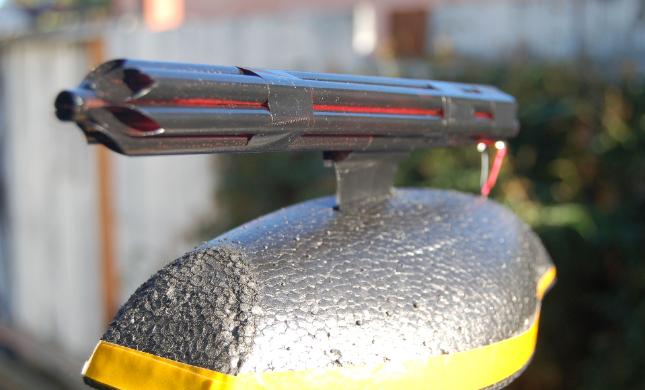
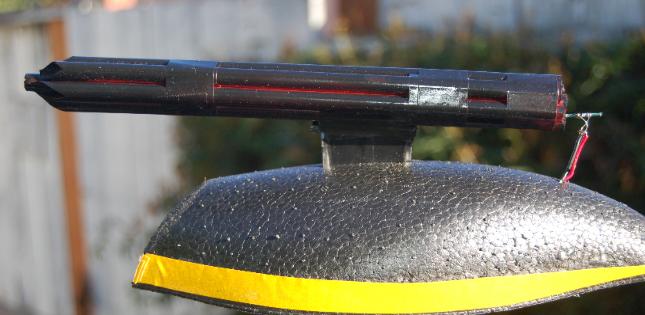
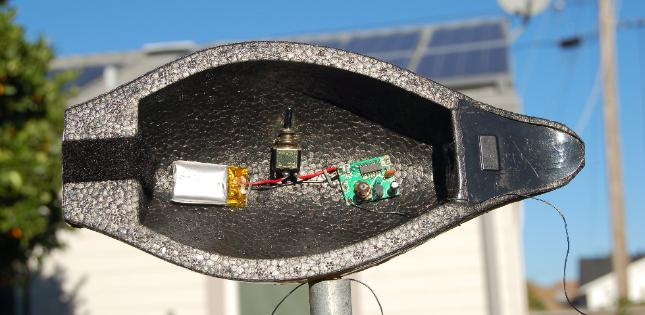
NOTE- IF you launch pyrotechnics from your drone keep in mind, there will be ALLOT of HOT, BURNING DEBRIS! This back blast WILL eat the foam hull, PIT the lenses of any cameras and in the worse case scenario CATCH YOUR DRONE ON FIRE and burn it to a crisp! NOT covered under WARRANTY! Think about it, please. There are things you can do, small stuff to protect your investment if you plan on firing pyros from it.
You probably already used your drone as a launch platform for some pyrotechnic device and it turned out all right. But as you start to mod and experiment it comes down to the amount of relative knowledge you have or may glean from this site. It’s all about your comfort level.
I fly my drone skinless. When I learned that the outer hull skin weighed more than the foam hull it covered, there were no options; I shit canned it. Reducing the weight on a stock drone gives you a little more responsiveness. Remove too much, and the drone is more apt to flutter away in the wind.
Protect the top of the foam hull first. The easiest way is to take a square sheet of lite aluminum foil and spray-paint it black. When dry, wrap the sheet over the hull, tuck it under, trim and tape the edge down. This metal skin still weighs less than the stock skin and is tossable when done! It will protect the foam from burning debris, small tears and cuts can be taped.
If you shoot a device from atop the drone, the back blast of burning debris will be shot BACK at the front of the drone hitting the forward camera first, maybe. Just wrap a single layer of saran wrap (clear wrap) over the camera an inch back or two, tape it secures and trims excess. You can use the cover to see if either hit it.
Using a HERO cam without the OEM case on the drone is no different, it needs protection as well. The clear wrap technique can be used here too. A single wrap over the front half of the HERO Increases the comfort level quite a bit, AND no noticeable degradation in picture quality is noted. Since wrapping can be a bit tedious, leaving it on becomes a habit. You can still access the I/O ports, mem card, and shutter button.
Leave a Reply